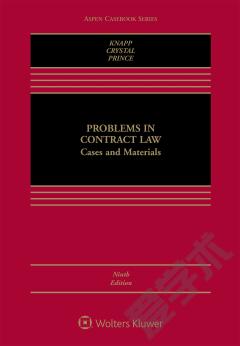Mergers and Acquisitions —— Cases, Materials, and Problems
----- 兼并和收购:案例、材料和问题
Recent financial scandals, such as those surrounding WorldCom, Tyco and Enron, have kindled greater interest and attention on the topic of this new casebook: the law of mergers and acquisitions. Recognizing the increasing importance of this subject within the modern law school curriculum, the goal of this new casebook is to introduce the topics covered in the law of mergers and acquisitions in terms that are accessible to the uninitiated law student. In both the selection and editing of the cases and other materials to be included in this casebook, the guiding principle has been to present the material in such a manner as to enable the student to master the fundamental principles of the law of mergers and acquisitions and to appreciate the public policies that underlie this legal framework. The other, closely related objective of this casebook is to present the relevant legal principles of mergers and acquisitions in such a manner as to allow the law student to be able to hit the ground running when they graduate and enter the practice of business law, which I presume will include M&A transactions. As part of this effort, the casebook endeavors to instill in the law student a sense of what it takes to be a good business lawyer in the modern practice of law in a transactional setting. This new casebook underscores the role of the lawyer as transaction planner by making extensive use of problems, which require the student to work through the terms of various federal and state statutes in order to understand what must be done to validly consummate an acquisition and why the law imposes these requirements. As part of this focus, the text emphasizes the increasing importance of fiduciary duty law over the past twenty years and its all-important role in guiding the transaction planner. Finally, these themes are developed in the context of M&A activity both on Wall Street, and just as importantly, on Main Street. That is to say, this casebook emphasizes not only the type of high profile M&A transaction that the law student is likely to read about on the front pages of the WALL STREET JOURNAL, but also provides comprehensive treatment of the sale of a closely held business, which is the type of transaction that forms the basis of M&A practice for many, many of today's transactional lawyers.
{{comment.content}}








 京公网安备 11010802027623号
京公网安备 11010802027623号